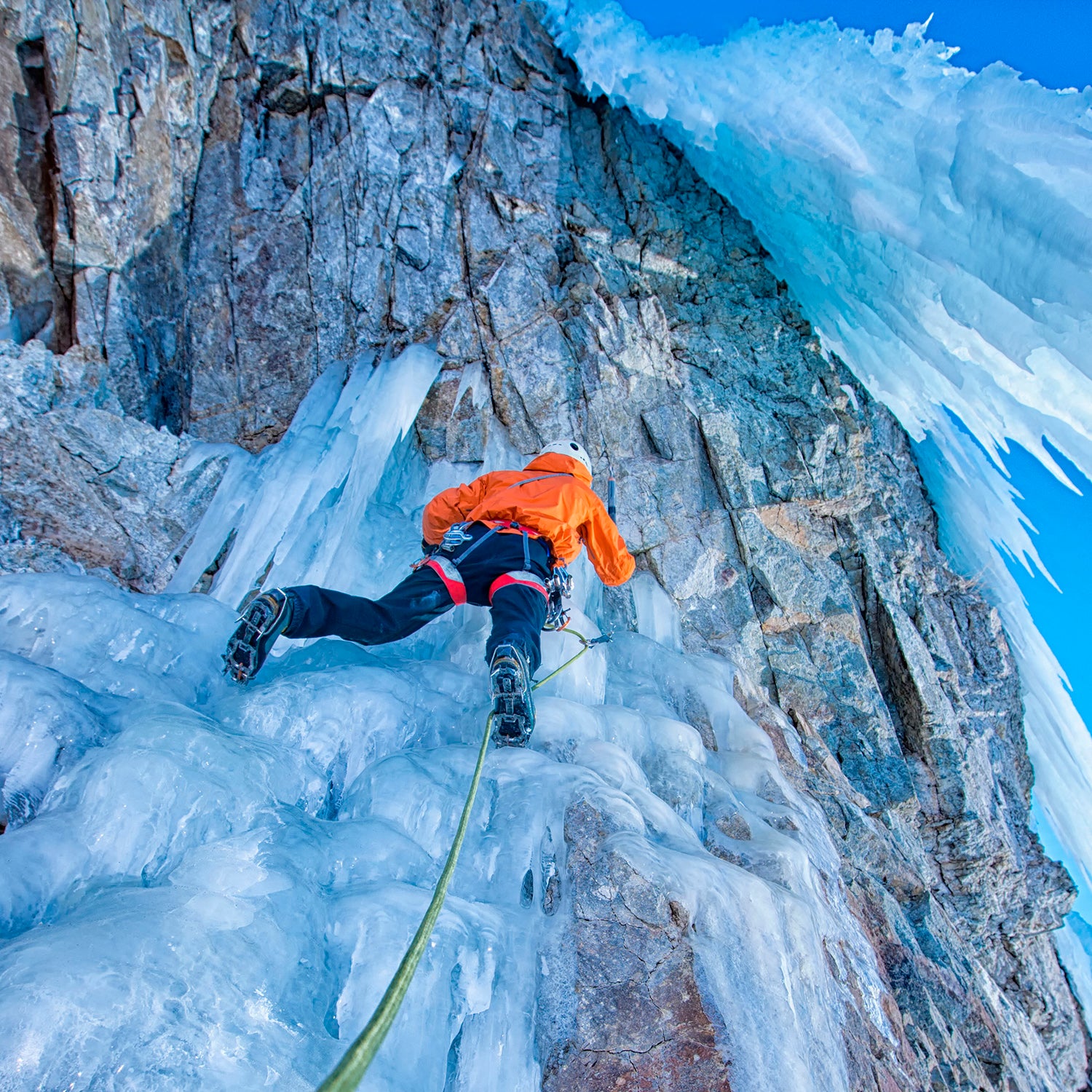The classic three-piece layering system consists of a baselayer to move moisture away from your skin, a shell to keep wind and water out, and an insulating layer to hold in warmth. That middle layer is where the magic is. It’s the one you swap out to match the conditions, and the one you rely on to keep you perfectly ventilated on warm spring days and toasty warm in deepest winter. Your midlayer can be anything from a thick down puffy to a stretchy synthetic piece designed to dump heat through special channels or pores. Some midlayers also do double-duty, sporting protective panels or water-resistant coatings so you can tag them in as outer layers in a pinch.
So, in finding the best insulation on the market for 2025 we looked at a full spectrum, including vests that save weight by targeting the core, and even hybrid pieces that strategically place insulation only where it’s needed. After a long season of testing everywhere from North Idaho to the mountains of New Hampshire, these are the midlayers that came out on top.
At a Glance
- Editor’s Choice:
- Best for Aerobic Pursuits:
- Most Packable:
- Best For Frigid Days:
- Most Stylish:
- Most Versatile:
- Best Fleece Midlayers
- How to Choose Midlayers
- How We Test
- Meet Our Lead Tester
If you buy through our links, we may earn an affiliate commission. This supports our mission to get more people active and outside. Learn more.
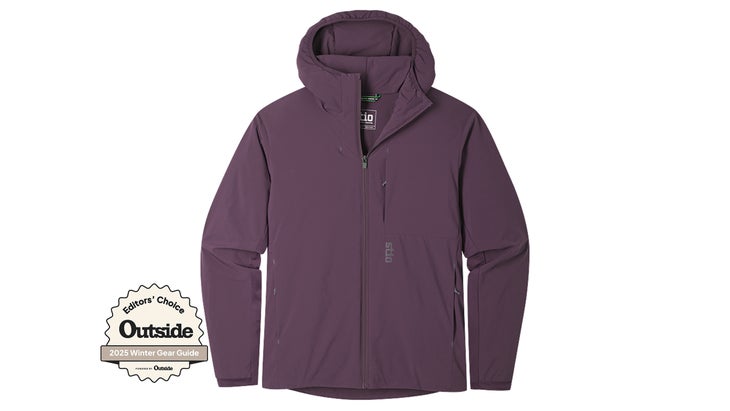
Editor’s Choice
Stio Fernos Insulated Jacket
Sizes: S-XXL
Weight: 17.8 oz
Warmth: 7
Breathability: 7
Durability: 10
Pros and Cons
⊕ Great stretch
⊕ Super durable
⊕ Balance of warmth and breathability
⊗ Moderate compressibility
The Fernos Insulated Jacket is the sort of workhorse synthetic midlayer everyone should own. It’s got the perfect amount of insulation to keep you warm whether you’re pushing hard up the skin track or standing around in the snow staring up at your route. The face fabric stood up to the notorious west wind on Teton Pass’s Glory bootpack, but was still breathable enough to keep our tester from having to swap his base layer at the summit. Thinner panels under the arms and along the sides helped with the breathability score by venting heat where testers needed it most. The Fernos is surprisingly stretchy and durable enough we never worried about tears whether wrestling with a toothsome pup tailgating in the parking lot or bundling firewood back to camp.
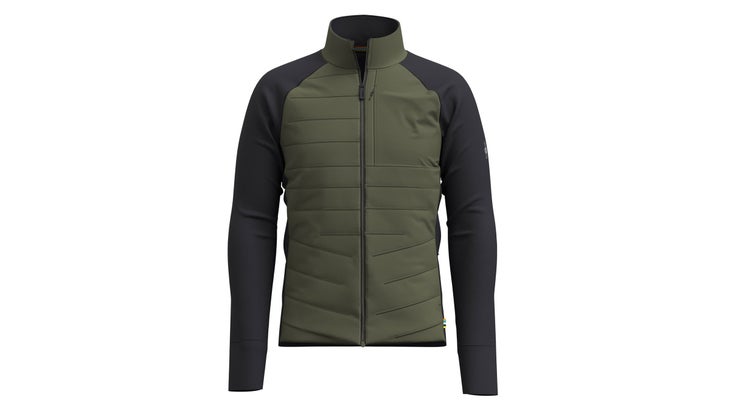
Best for Aerobic Pursuits
Smartwool Smartloft Hybrid Jacket
Sizes: S-XXL
Weight: 16 oz
Warmth: 6
Breathability: 10
Durability: 8
Pros and Cons
⊕ Exceptional stretch
⊕ Super breathable
⊕ Generous pockets
⊗ A little heavy
This mullet of a hybrid jacket is all business in the front and breathability in the back. The Smartloft Hybrid Jacket protects the chest with a panel of wind- and weather-resistant softshell and quilted insulation— 50 percent recycled/reprocessed wool, 38 percent virgin wool (including trimmings from Smartwool’s cutting room floor), and 12 percent polyester. Meanwhile, the back, sides, and sleeves are cut from a stretchy, fleece-weight blend of merino, polyester, and elastane, which afforded testers exceptional movement and breathability while moving fast through the cold. Our New Hampshire trail runner and resident science teacher raved about “achieving perfect thermal equilibrium.” In Wyoming, our Nordic skier used the thumb loops in lieu of gloves on a warm spring day. A DWR finish kept the wintry mix at bay and a trio of zippered pockets handily secured things like keys, phone, and snacks.
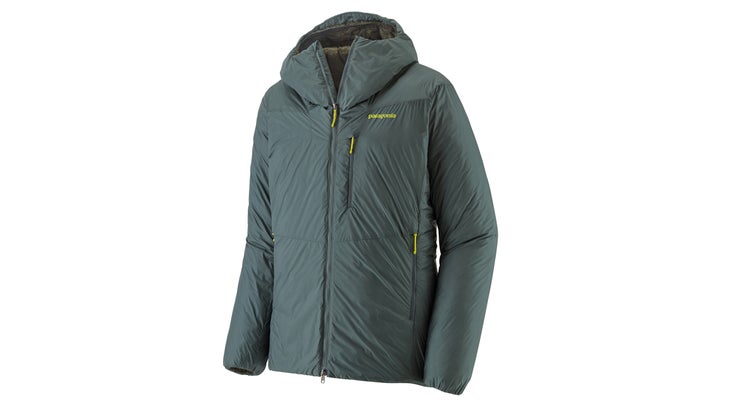
Most Packable
Patagonia Das Light Hoody
Sizes: XS-XXL
Weight: 12.2 oz
Warmth: 9
Breathability: 6
Durability: 7
Pros and Cons
⊕ Water- and wind-resistant
⊕ Excellent warmth-to-weight
⊕ Packs down well
⊗ Expensive
The Das Light Hoody is the ultimate puffy layer for cold and wet conditions. Patagonia’s years-long quest to build a synthetic alternative to the loftiest goose down (which loses its insulating properties when wet) resulted in its proprietary Plumafill insulation. Imagine hundreds of feather boa-like strands draped throughout the jacket, providing very nearly the same warmth-to-weight ratio as the finest goose down, but with a much faster drying time and warming capabilities when wet. Stuff 65-gram Plumafill inside an ultralight, 10-denier wind- and-water-resistant shell, and you’ve got a puffer that kept our testers toasty even while skiing in single digit temps in British Columbia’s Monashees, as well as on one unfortunately rainy ski tour in northern Idaho. It stuffs down to the size of grapefruit in the pack, and amenities like four pockets, a helmet-compatible hood, and a two-way zipper for use with a harness make this an expedition-ready piece.
PAID ADVERTISEMENT BY REI
Arc’teryx Atom Insulated Hoodie – Men’s ($300)
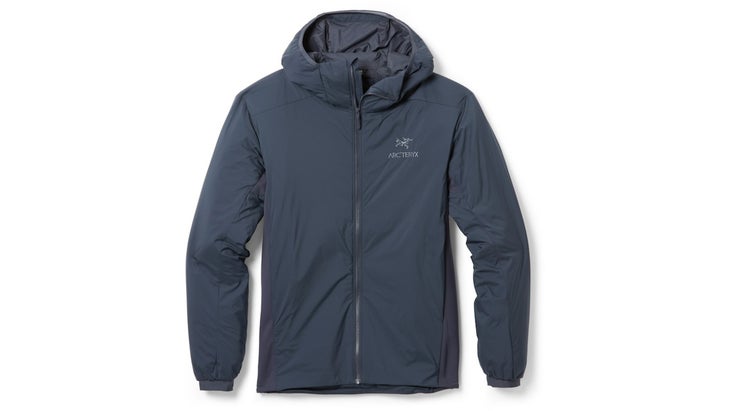
Alpine-proven as a mid layer or standalone jacket, the men’s Arc’teryx Atom insulated hoodie is your companion for backcountry skiing, climbing, snowshoeing or winter commuting. Insulation is synthetic. Weight for the product is 13.05 oz
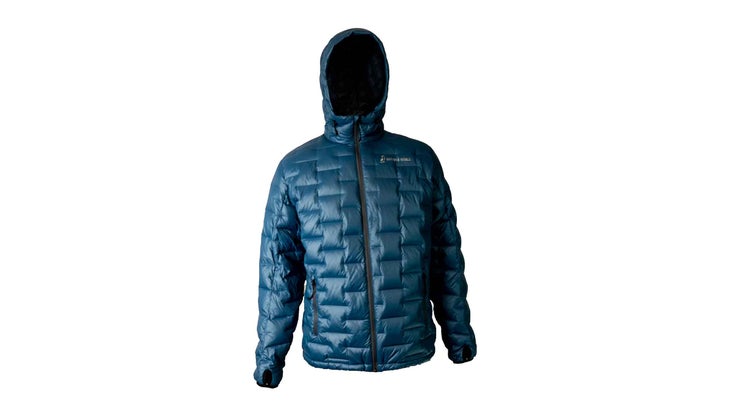
Best For Frigid Days
Outdoor Vitals Nova Pro
Sizes: XS-XXL
Weight: 14.5 oz
Warmth: 10
Breathability: 7
Durability: 6
Pros and Cons
⊕ Great price
⊕ Excellent warmth-to-weight ratio
⊕ Water resistant
⊗ Less compact than other down jackets
First and foremost, testers were wowed by the Nova Pro’s price tag. It’s remarkable to find an 850-fill down hoody for $250, much less one with such a full feature set. The bells and whistles on this jacket include three-point tensioning in the helmet-compatible hood and another drawstring at the waist to help keep out drafts, as well as thumb loops at the wrists. When those made the jacket too toasty, we used the pit zips to dump heat—a rare but welcome feature in a down puffy.
The Nova Pro’s real innovations come in the fill and fabric, though. Down offers two big advantages over other kinds of insulation: it’s remarkably warm for the weight and packs down very small. The disadvantage is that if it gets wet, the down clumps together, eliminating its insulating properties. To combat that, the Nova Pro employs a hybrid fill of water-repellent-treated down and synthetic fibers, which retains the majority of its loft when soaked.
Outdoor Vitals also applied a DWR coating to the jacket, making it water resistant; testers watched some unusual early-spring Wyoming rain bead up and roll off of the jacket’s fabric without soaking in. That made the Nova Pro great not only for marginal freezing temps but also in wet flurries or light drizzle. All that insulation is packed into baffles, which are woven instead of stitched into the jacket’s main fabric. That makes for fewer stitching holes through which the down can escape. The only downside to the Nova Pro is that all of those niceties add weight—making it less packable than you might expect from an 850-fill down.
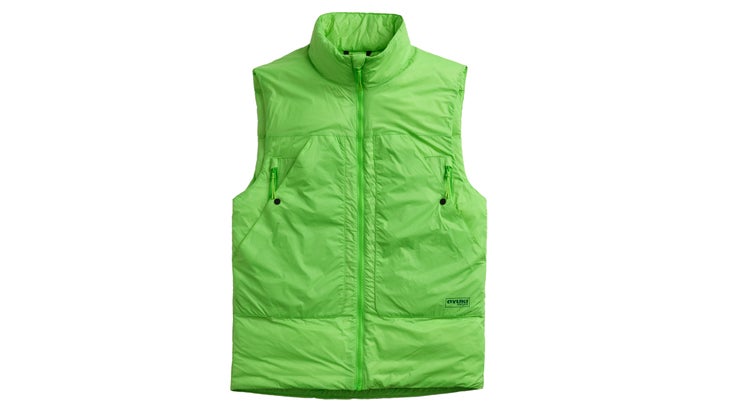
Most Stylish
Oyuki Tōya Down Insulator Vest
Sizes: XS-XXL
Weight: 8.1 oz
Warmth: 5
Breathability: 9
Durability: 5
Pros and Cons
⊕ Unbeatable warmth-to-weight
⊕ Huge stash pockets
⊕ Exceptional breathability
⊗ Not much wind protection
It’s hard to beat the warmth-to-weight ratio of a down vest. It traps the bulk of your body heat by insulating your core and, without sleeves, vests are also exceptionally breathable. The Toya Insulator also employs Allied Down’s recycled, water-resistant 700-fill down, meaning it’s easier on the planet, more lofty when damp thanks to a hydrophobic coating, and quicker to dry. Testers loved this vest not just for all of that, but for its whimsical Japanese styling. There’s a plump, chin-height collar and a pair of massive drop pockets on the vest’s front. “I think the pockets are a style hit, but they worked great for stashing a couple of PB&Js,” commented one tester. There’s also a pair of zippered, fleece-lined hand pockets to warm up your digits or secure valuables.
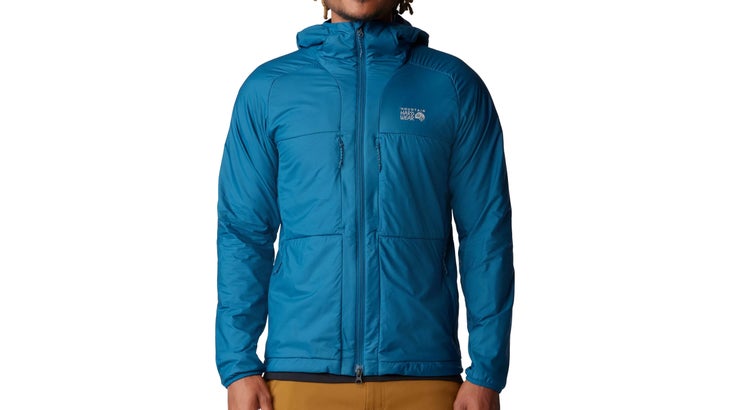
Most Versatile
Mountain Hardwear Kor Airshell Warm Hoody
Sizes: S-XXL
Weight: 13.4 oz
Warmth: 6
Breathability: 7
Durability: 9
Pros and Cons
⊕ Four-season insulation
⊕ Terrific moisture management
⊕ Super packable
⊗ Insufficient insulation for colder days
“Packing for my next trip, it’s hard to imagine leaving this layer at home,” said our Boulder-based tester. The Kor Airshell Warm Hoody perfectly straddles the knife-edge between a superlight windbreaker and an insulated midlayer, making it an essential piece in the mountains in any season. The 20-Denier stretch ripstop outer fabric was tough enough to withstand 30-mph gusts and a season’s worth of abuse from pack straps, a climbing rack, and shouldered skis—all of which our tester employed during missions around the Front Range. The jacket’s eco-friendly main fabric is made of 59 percent recycled nylon and coated with a DWR that easily shed snow and drizzle. It’s insulated with a thin layer of AirMesh, a brushed-back mesh made with hollow core yarn that traps heat and provides exceptional warmth to weight. It was enough to keep us warm bootpacking and skinning in temps in the teens. In colder conditions, or at rest, we slapped a shell or puffy on top, and the supple mesh liner helped move moisture away from our base layers, keeping us dry and toasty. At 13 ounces, it’s super-light but still boasts four zippered pockets, an elastic drawcord at the hem, and a two-way zipper for compatibility with a harness and belay device.
How to Choose Midlayers
Insulated midlayers come in as wide a range as the activities you’ll use them for and the conditions you’ll use them in. The fabrics and insulation they use go a long way toward determining warmth, breathability, and weather protection. Here’s how to judge what will best serve your needs.
Water-Resistance
Down-filled layers offer the best warmth for their weight but can lose that advantage if the garment gets soaked from precipitation or an accidental dousing. Once wet, down clusters wilt and pack down—which means they lose all their insulating ability. If you expect especially wet conditions, a synthetic insulation (like in the ) or a bio-based fill (like in the ) will do better at retaining its loft and therefore keeping you warm when wet.
Warmth
The general rule of thumb is the thicker the layer, the warmer it is. That comes with trade offs like weight or packed size if you have limited space in your pack. If you know it’s gonna be frigid, by all means, go for a thick puffy like the . But that piece could be overkill if the day heats up. Consider layering more than one less warm piece, like the and the , to give you more options to mix and match amid changing conditions.
Weather Protection
If you plan to wear a wind- and waterproof shell over your midlayer, you won’t need to worry about your midlayer’s weather-blocking ability. If you don’t intend to carry a shell, however, look for a piece that sports wind-blocking panels and/or a DWR chemical treatment for more wind and weather resistance. The and the are both good examples.
Activity Level
If you are going to amp up the cardio for extended periods of time, look for a more breathable layer. The better your midlayer vents water vapor, the less sweat you’ll trap next to skin. That’s both a comfort advantage and a safety win: moisture can quickly sap your body heat if you stop moving or encounter strong winds. More porous fabrics, like on the or , will allow that perspiration to move away from your body, keeping you dry as well as warm.
How We Test
- Number of testers: 7
- Number of products tested: 50
- Mountain ranges represented: 14 (Whites, Greens, Front Range, Gore Range, Bitteroots, Selkirks, Monashees, Wasatch, Teton, Pioneers, Sawatch, Park, Mosquito, Gros Ventre)
- Toddlers towed in a chariot: 1
Last winter, we found that more than half of our test crew were teachers. You’d think we’d want a slightly more epic batch, but in reality these were our ideal evaluators. For one thing, their need to get out skiing, running, cycling, and climbing was uncompromising, if only to shake off the stress of teaching today’s youngsters. That meant that they went out no matter the conditions, pushing these garments to their limits. For another thing, they are used to grading stuff, and criticizing the fit of a hood or odor-fighting properties of a fabric was a welcome change from marking up another essay on Moby Dick.
For this test, we put insulated models of every stripe through the rigors of lift-accessed and backcountry skiing, climbing, snow biking, Nordic skiing, and tailgating. Conditions ranged from single digits in Wyoming to rain in North Idaho to 70-mph gusts on New Hampshire’s Mount Washington. Of the 50 layers we wore, there were shelled puffies, traditional down sweaters, synthetic hoodies, lightly-insulated windbreakers, and a couple of vests. Our testers graded warmth, breathability, fit, durability, sustainability, and price. Their verdicts led us to select only the best of the batch. Those are the reviews you’ll find here.
Meet Our Lead Tester
Frederick Reimers
Reimers was raised on a canoe-tripping summer camp in Ontario, Canada, and had completed a trio of 40-day expeditions before he even shipped off to college. When his parents sold the camp and moved to Jackson Hole in the 1990s, he followed. He has made a career from scribbling about outdoor culture and gear ever since. In addition to ���ϳԹ���, his work has appeared in The New York Times, Smithsonian, Bloomberg Business, and Ski. While Wyoming’s long winter does feel a little long round about April, that makes it the perfect place to test layers. You’ll find Reimers testing them on ski slopes, Nordic tracks, and godforsaken pre-dawn dog walks.


